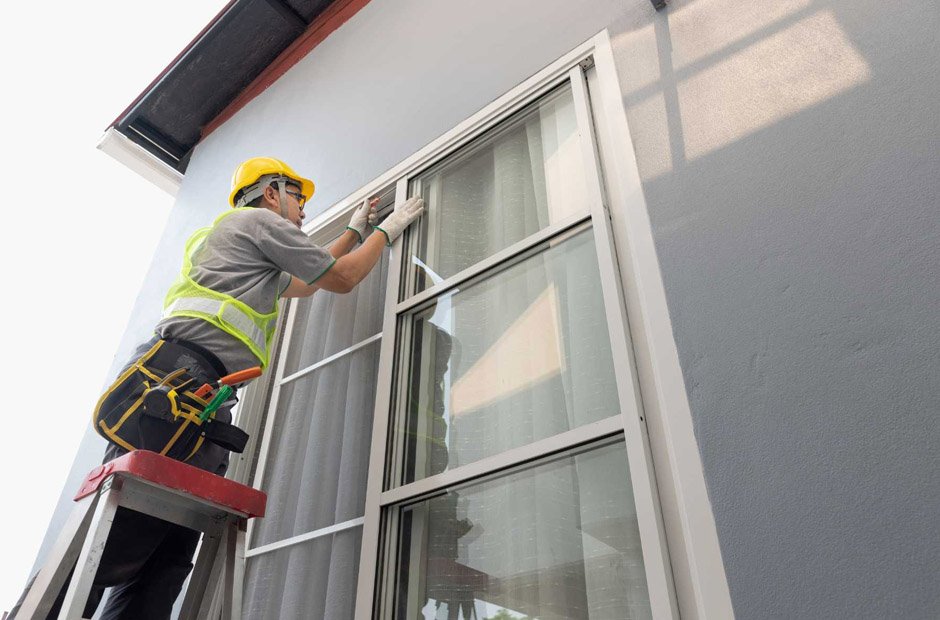New windows will last several years with minimal maintenance, but can eventually wear out over time. To avoid moisture and pest issues, schedule timely window replacement by contacting a local contractor. Working with an experienced contractor gives you professional insight and guidance throughout the project. Here are a few steps involved in replacing your old or damaged windows:
Assess the Damage
Before you buy a replacement window, asses the damage. You may need to replace a window due to drafts, fogging between panes, water leaks, or broken glass panes. Stuck windows that can’t open or close, or don’t reach their full range of motion, are other reasons for a window replacement service. During the first assessment, contractors evaluate the damage and measure the window opening’s width, height, and depth. They evaluate the number of windows and panes that need replacing and provide estimates.
Contractors can offer assistance with new window selection to help you upgrade to more efficient options. After the assessment, contractors schedule the replacement date. They also provide insights into necessary preparations, such as removing window treatments. Some installers can assist with permits if you live in a historic area or a regulated building.
Remove Old Windows
If the old windows are still intact, the contractor carefully removes them, paying attention to avoid damaging the surrounding frame. They then clean the opening and inspect it for structural issues, such as bowing sills or rot. Any debris, old caulk, or insulation is removed from the opening before applying a waterproof membrane to cover the sills and studs. Contractors repair structural damage by reinforcing the framing or replacing deteriorated wood before the new installation. They also add insulation if the old material is damaged.
Professionals then take final measurements of the openings for the pane and frame fabrication. Contractors may also protect the surrounding area with drop cloths or taped materials. Prepare the installation area by removing furniture and fixtures to create easy access. Experienced contractors handle window removal carefully to preserve the structural integrity of the opening and minimize the risk of injury from sharp shards.
Install New Windows
The next step involves installing the new windows, starting with the frame and sealing. Contractors set the window into the opening, check if it’s plumb and level, and assess the frame support. They also use flashing tape or caulk to seal the perimeter and prevent air and water infiltration.
Once the window is properly aligned and sealed, contractors fasten it to the framing and use spray foam insulation to fill gaps. They also apply exterior flashing if necessary to protect your window against water damage. After installation, contractors test the window to see if it opens and closes as intended and make any necessary adjustments.
Finalize the Project
The final touches include cleaning debris and disposing of waste from the project. Contractors inspect the window for proper sealing and insulation to address gaps and cracks. Contractors may also provide a final project walkthrough to help you understand what they’ve done or explain maintenance tips. Routine maintenance involves inspecting the seals, cleaning the tracks, and re-caulking joints as needed.
Speak To a Window Replacement Contractor
Replacing a damaged window requires protective tools and careful measurements to produce durable installations. Involving a contractor when planning your project reduces the chances of mistakes and poor-quality window installations. You may also get assistance with material selection and ongoing maintenance. Whether you want single-hung windows, bay windows, sliding windows, skylights, and more, a professional team has the necessary experience to work quickly and effectively. Contact a window replacement contractor today to find out more about their services.



